SI1 vs SI2 Diamonds – What Are the Differences?
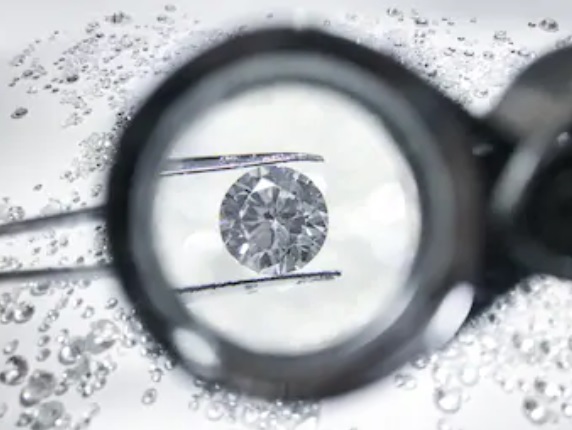
Diamond clarity grades are one of the most misunderstood aspects of shopping for a diamond ring – especially when we go down the scale to the SI1-SI2 range.
As their name suggests, slightly included (SI) diamonds typically have a lot more inclusions compared to higher clarity grades. However, SI1 and SI2 diamonds offer budget-conscious shoppers an option to get decent looking stones at very affordable prices.
In this write up, we will look at the differences between SI1 vs SI2 diamonds and what they are using real-life examples. I will also reveal insider tips for choosing eyeclean SI diamonds and help you avoid the pitfalls of buying lower clarity diamonds.
Also, I’ve personally bought an SI1 diamond engagement ring and made a full video review to show you how it looks like in real life. And I’ll even reveal the best places to be shopping for them.
Let’s jump right in…
Here is a list of topics we will be covering:
- SI1 and SI2 Clarity Diamonds – What Are They?
- Visual Differences Between SI2 vs SI1 Diamonds
- SI1 vs SI2 Clarity Diamonds – What Are the Price Differences?
- How to Choose Slightly Included Diamonds the Right Way?
- Best Place to Buy SI1 and SI2 Loose Diamonds
- Wrapping Things Up: SI1-SI2 Clarity Diamonds
SI1 and SI2 Clarity Diamonds – What Are They?

The GIA diamond clarity scale is the most widely used system in the industry and I’ve written an entire section about it here. So, if this is your first time reading up about the 4Cs, make sure you check out the link above before returning here again.
In short, when a diamond is graded for clarity, the inclusions are assessed based on a number of factors: size, number, position, nature and color/relief.
Slightly included diamonds typically contain inclusions that are easy for a trained grader to see under 10X magnification. The typical grade setting inclusions include crystals, clouds and feathers which are usually located near the center of the diamond.
Visual Differences Between SI2 vs SI1 Diamonds
SI2 vs SI1 diamond comparison.
Technically speaking, the differences between SI1 and SI2 diamond grades are subtle.
In general, SI1 diamonds have inclusions that aren’t visible to the unaided eye and you’ll see eye-visible inclusions more often in SI2 stones. Here, I do want to point out that these are very general statements and you will need to assess slightly included diamonds on a case-by-case basis.
Durability is also a factor that grading labs take into account when assessing a diamond’s clarity. If the inclusions in a diamond are deemed to be detrimental to its durability (e.g. serious indented naturals, cavities, chips), it can cause the diamond to be graded lower as an SI2 diamond.
SI1 vs SI2 Clarity Diamonds – What Are the Price Differences?
One of the biggest advantages of buying SI diamonds is their lower prices. They can be 30-60% cheaper than Internally Flawless diamonds but what about the price differences between SI1 and SI2 clarity grades?
In general, I would expect to see a 5-15% difference in prices and this is a substantial amount especially if you are buying larger carat sized diamonds. Here’s a reference price chart I’ve compiled to give you an idea of how much they cost.

Do note that diamond prices can vary quite significantly when we are talking about lower clarity grades. It won’t be uncommon to find SI2 diamonds that are similarly priced or more expensive than SI1 diamonds due to the nature of their inclusions and other subtle pricing factors.
How to Choose Slightly Included Diamonds the Right Way?
SI1 and SI2 diamonds are called slightly included for a reason – and that’s because of the inclusions they have. The key to buying a beautiful diamond is to make sure that the diamond is eye clean and that the inclusions don’t pose a risk to durability.
However, shopping for an SI diamond can be tricky and many consumers make wrong buying decisions and often end up with unpleasant looking diamonds. So, how should you choose SI1 and SI2 diamonds?
Well, the best way to do this is to use magnified video listings to help you determine eyecleanliness. I’ve outlined a method here to do this easily. When I personally shop for diamonds, there are also certain types of inclusions I would avoid.
Inspect GIA certified loose diamonds easily with videos at James Allen.
Also, it depends on the purpose of your jewelry and the type of diamond shape you are interested in. For example, if you are buying earrings or pendants where the viewing distances are much further compared to an engagement ring, you can get away with a lower clarity grade.
If you are buying step cut diamonds like the emerald cut or Asscher cut, I actually recommend buying above a VS2 clarity grade as the inclusions are usually more visible due to the larger table facets.
Best Place to Buy SI1 and SI2 Loose Diamonds
A diamond ring with an SI1 center stone I recently bought from James Allen.
For most people shopping for SI diamonds, I’m pretty sure an eyeclean diamond would be a key criterion. Bear in mind that the lab report will not tell you exactly where the inclusions are located in the diamond and they don’t fully reveal the severity of the inclusions.
And that’s the part that makes the shopping process hard. In my opinion, the best places to buy SI diamonds are vendors that offer magnified 360-degree videos of their diamonds in neutral lighting and risk-free money back guarantees for your peace of mind.
These are the retailers I highly recommend when it comes to shopping for SI1 and SI2 diamond:
James Allen – The ideal vendor to shop for lower clarity diamonds. Their HD videos allow you to inspect diamonds from all angles and down to the smallest of details. This means you can see exactly where the inclusions are and even play around with the zoom settings to assess the diamond at its real-life size.
Blue Nile – They are a behemoth in the diamond industry and have the world’s largest inventory of diamonds. Blue Nile has very competitive prices and their wide selection of diamonds cater to all types of budgets and preferences. There are also hundreds of beautiful setting designs to choose from that are made with good craftsmanship.
White Flash – They are renowned for their super ideal cut diamonds that are carefully curated for extreme light performance standards. White Flash also examines their in-house diamonds for inclusions and provide an assessment of whether the diamond is eyeclean or not. This makes it really straightforward for you to buy a beautiful, sparkly diamond.
Wrapping Things Up: SI1-SI2 Clarity Diamonds
Stunning 0.913ct G SI1 in classic 4 prong solitaire engagement ring – White Flash
As you can see, there are technical and visual differences between SI1 and SI2 diamonds. Depending on the purpose of your purchase, it can be OK to buy a lower SI2 clarity diamond especially if they are used for earrings or pendants.
The most important thing is that SI clarity diamonds must be evaluated on a case by case basis using tangible data like videos. That’s because the inclusions in every diamond are unique.
While there are plenty of SI1 and SI2 diamonds that have inclusions detrimental to their appearance and durability, there are also beautiful SI diamonds that look indistinguishable from higher clarity diamonds.
As a final piece of advice, do your research and remember to have fun on your journey towards finding that perfect stone. If you are still unsure or need help in assessing a diamond, feel free to get in touch via email or leave a comment below.
Related Articles
Leave A Comment


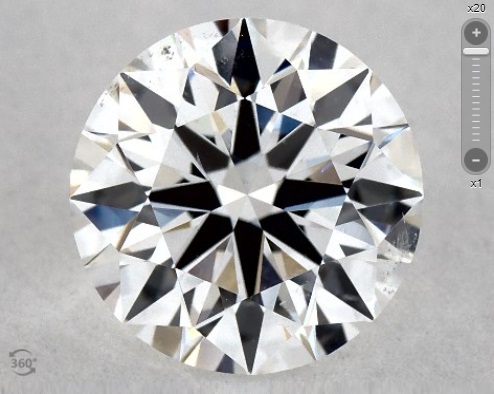
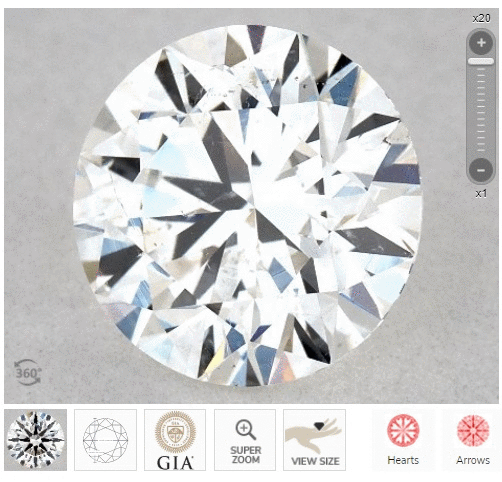

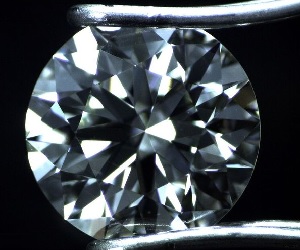

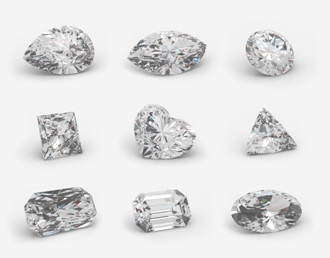
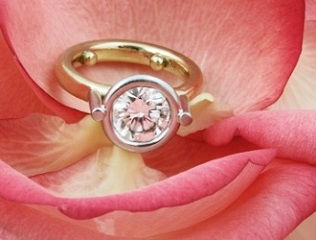









4 Comments
Good article! I’ve learnt a lot from your writings and I want to add something that I came across in many jewellery stores here in the UK. Many sellers list diamond jewellery with clarity ranges like SI1-SI2 and this is misleading because they don’t offer certificates except for their words.
I would recommend people to pay attention to your paperwork and that shoppers should ensure that the stone is certified by the GIA. They are highly respected professionals in the diamond industry. And when they grade your gem, you can be assured of accuracy. This is obviously important for collectors who need to validate their purchase.
But it may be nice for jewelry buyers, as well, to be able to show the recipient what type of grade their diamond is. It is always a good idea to have proof when it comes to costly stones.
SI1 and SI2 clarity diamonds are not for everybody and many first-time shoppers get squirmish when they see multiple inclusions under magnification. The fact is, they can look identical to an IF or VVS diamond if chosen well.
From a practical perspective, they can offer an affordable method to get a diamond at lower price points. You just have to put in the extra effort to sieve through diamonds to find one that is well cut and eyeclean.
As a professional in the industry, I would never buy a diamond with SI1 or lower clarity grade based off of a GIA report alone. And that should say a lot about what you shouldn’t be doing.
I have shortlisted 2 diamonds that have SI1 and SI2 clarity grades certified by GIA. One is $500 less expensive than the other and I looked at both in person. I can’t see any flaws or dark spots with my eyes in the jeweller’s shop and they both look very similar. Which is better to buy? I’m afraid that I would make a mistake with the SI2 diamond. Any tips here?
This is actually a complicated question and I really can’t give any concrete answers without details of both diamonds for myself. Besides eyecleanliness, I also want to ensure that durability is not a risk in both diamonds. If you looked at both in full details and in different lightings and can’t detect any inclusions, then I would say, it passes your own acuity test for eyecleanliness.
Ideally, when I buy SI2 diamonds, I want to avoid those with dark black inclusions and buy those with spread out inclusions.
Here’s an example of a diamond I would stay away from:
https://www.jamesallen.com/loose-diamonds/round-cut/1.09-carat-f-color-si2-clarity-true-hearts-cut-sku-8530168
Here’s one that is a great option for an SI2 diamond:
https://www.jamesallen.com/loose-diamonds/round-cut/1.04-carat-e-color-si2-clarity-true-hearts-cut-sku-8280827
Besides focusing on the clarity between SI2 vs SI1 diamonds, I think you also need to consider other factors such as cut quality and light performance when making a decision. Don’t get too blindsided on clarity as it should be the only thing that matters in a purchase.